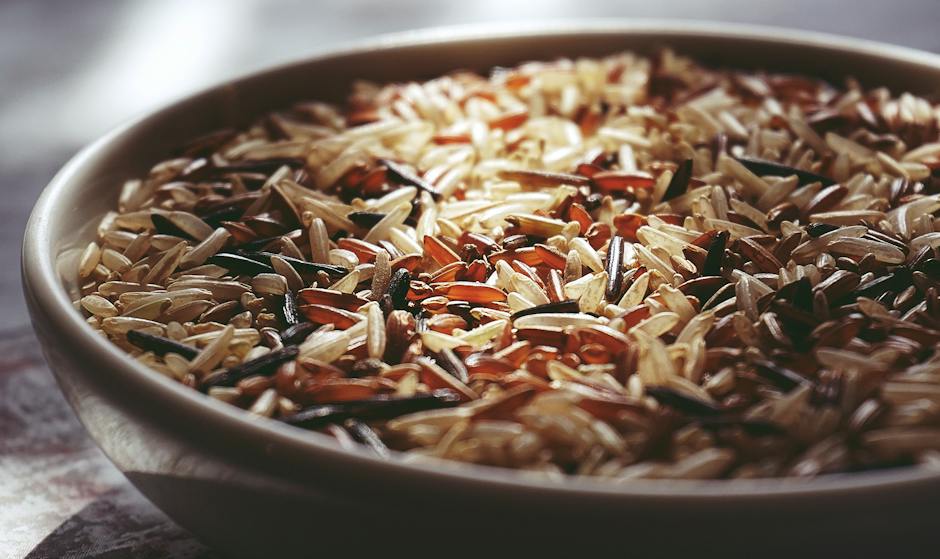Jasmine Rice vs White Rice: Unveiling the Best Grain for Your Health and Taste Buds
When it comes to choosing the perfect rice for your meal, the options can be overwhelming. Two popular contenders in the world of grains are jasmine rice and white rice. Both have their unique characteristics, flavors, and health benefits, making it a common dilemma for many to choose between the two. In this comprehensive guide, we’ll delve into the world of jasmine rice versus white rice, answering your burning questions and helping you make an informed decision that suits your dietary preferences and culinary needs.
What is Jasmine Rice?
The Aromatic Choice
Jasmine rice, named after the fragrant jasmine flower, is a long-grain variety of rice that hails from Thailand. Its subtle floral aroma and slightly sticky texture make it a favorite among rice connoisseurs. When cooked, jasmine rice is known for its delicate, soft, and fluffy grains, which pair beautifully with a variety of dishes, especially those from Southeast Asian cuisines.
Nutritional Profile of Jasmine Rice
- Calories: Jasmine rice is relatively high in calories, providing a good source of energy.
- Carbohydrates: It is primarily composed of carbs, which are essential for brain function and physical activity.
- Protein: Contains a modest amount of protein.
- Fiber: White jasmine rice is low in fiber; however, brown jasmine rice retains more fiber due to its unprocessed nature.
- Vitamins and Minerals: Enriched jasmine rice can offer additional nutrients like B vitamins and iron.
What is White Rice?
The Versatile Staple
White rice is a term that encompasses various types of rice that have been milled to remove the outer husk, bran, and germ. This process gives white rice its characteristic light color and softer texture. It’s a staple food for over half of the world’s population and is revered for its versatility, serving as the backbone for countless dishes across different cultures.
Nutritional Content of White Rice
- Calories: Similar to jasmine rice, white rice is calorie-dense, providing quick energy.
- Carbohydrates: It is predominantly made up of carbohydrates.
- Protein: Offers a small amount of protein.
- Fiber: Milled white rice has reduced fiber content compared to its whole grain counterparts.
- Vitamins and Minerals: Often enriched with nutrients like folic acid, calcium, and iron to compensate for the loss during milling.
Comparing Jasmine Rice and White Rice
Taste and Texture Differences
Jasmine Rice:
- Aroma: Possesses a unique, fragrant aroma.
- Texture: Tends to be softer and slightly sticky when cooked.
White Rice:
- Aroma: Generally lacks a distinct smell.
- Texture: Can range from fluffy to creamy, depending on the variety.
Health Implications
Glycemic Index (GI)
- Jasmine Rice: Typically has a higher GI, which means it can cause a quicker spike in blood sugar levels.
- White Rice: The GI can vary, but it’s generally lower than jasmine rice.
Nutritional Value
- Both types of rice can be part of a healthy diet when consumed in moderation and balanced with other nutrients.
How to Choose Between Jasmine Rice and White Rice
Consider Your Dietary Needs
- If you’re managing blood sugar levels, you might opt for white rice with a lower GI.
- For those looking for more flavor and a distinct aroma in their dishes, jasmine rice is the go-to choice.
Think About the Dish You’re Preparing
- Jasmine rice complements Thai and other Southeast Asian cuisines.
- White rice is incredibly versatile, suitable for everything from sushi to burritos.
Cooking Jasmine Rice vs White Rice
Perfecting Jasmine Rice
- Rinse the rice to remove excess starch.
- Use a 1:1.5 ratio of rice to water for the ideal texture.
Mastering White Rice
- The water-to-rice ratio can vary depending on the desired consistency.
- A common method is using a 1:2 ratio of rice to water.
Conclusion: The Verdict on Jasmine Rice vs White Rice
In the battle of jasmine rice versus white rice, the winner truly depends on your personal preferences and nutritional needs. Jasmine rice offers an aromatic experience and a distinct flavor that can elevate a simple meal to something special. On the other hand, white rice is a versatile and neutral canvas that can adapt to any culinary style. By understanding the differences in taste, texture, and health benefits, you can make the best choice for your next meal. Remember to enjoy rice as part of a balanced diet, and don’t be afraid to experiment with both varieties to discover which one you prefer. Whether you’re whipping up a fragrant Thai curry or a comforting bowl of rice pudding, the right rice can make all the difference.


